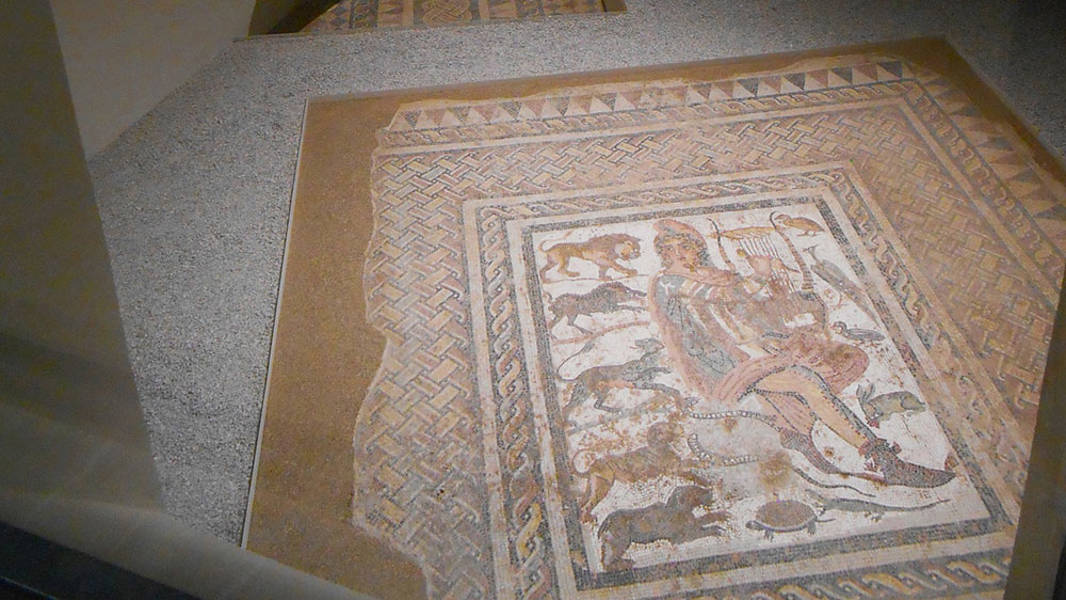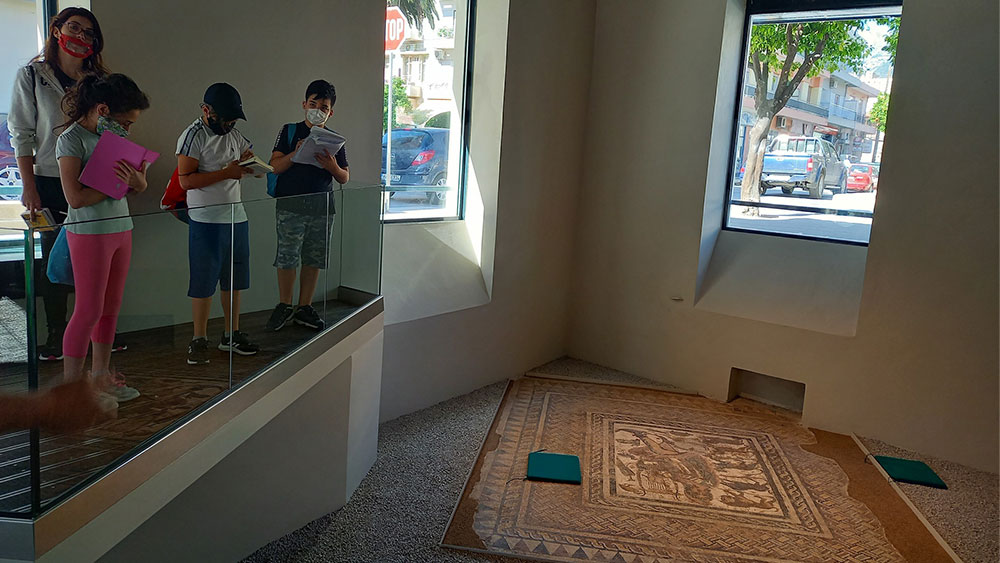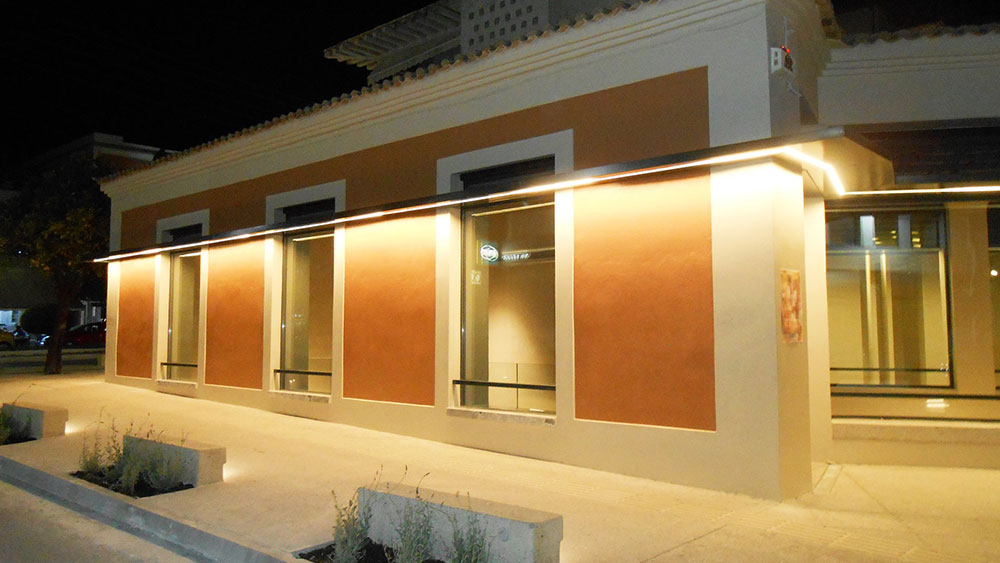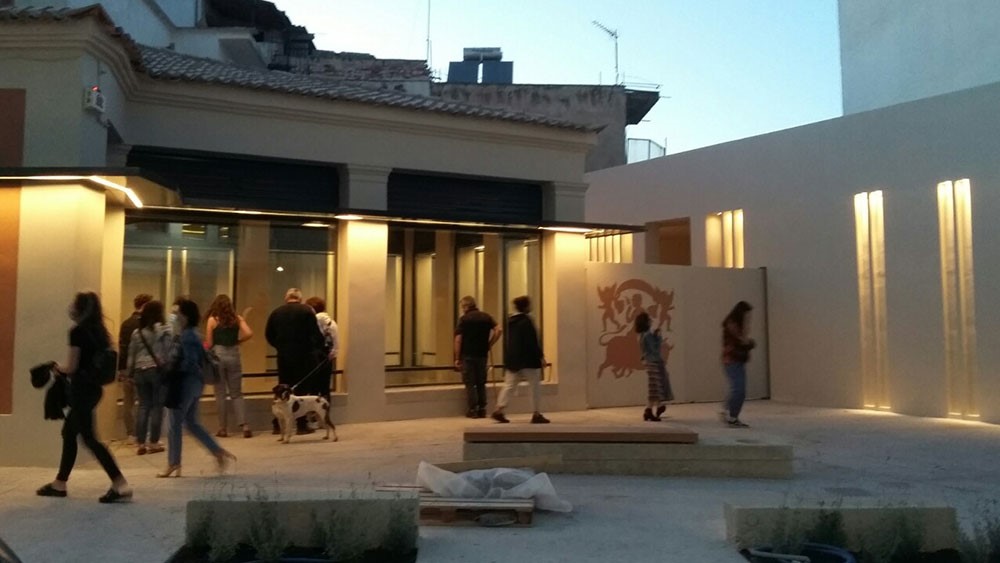
Showcasing Greece’s most famous unknown mosaic
The reverse side of the Greek €2 coin includes a representation of one of Greece’s most important Roman mosaics, The Abduction of Europa, which you can now visit at the recently opened House of Mosaics in central Sparta.
The Abduction of Europa and Orpheus with the Animals, the other work at the House of Mosaics, were discovered by accident in 1872 and 1890 respectively, the former in the garden and the latter in the wine cellar of private properties in Sparta.
To protect and showcase these elaborate Roman floors crafted at the end of the 3rd and beginning of the 4th century, the land where they were discovered was expropriated and a shelter was constructed. Despite their historical significance and archaeological interest, they remained hidden for years in what was effectively an informal warehouse for mosaics.
Then, approximately 20 years ago after a chance conversation with a local man, they came to the attention of retired public servant Ioannis Varvitsiotis. Fascinated by their beauty, which shone through in spite of the dust that covered them, Varvitsiotis made it his life’s work to bring them back to light, securing them the place they deserve on Sparta’s cultural scene.
In 2015, Varvitsiotis crossed paths with the Stavros Niarchos Foundation (SNF) and specifically with SNF Co-President Andreas Dracopoulos, who immediately saw the merit of his vision. A grant from SNF supported a study for the project, then the construction and outfitting of the modern building that houses the two mosaics and the development of educational content to contextualize them. And so, last May, in cooperation with the Ministry of Culture and Sports, Varvitsiotis’s long-held vision became a reality when the House of Mosaics finally opened its doors to welcome its first visitors.
Though until recently Sparta was not one of the most popular destinations in Greece, something is changing. SNF is working to help accelerate this change. SNF’s Laconia Initiative reflects both the deep history and current potential of the region, as well as the Foundation’s special connection with the ancestral homeland of our founder. Among other projects, the initiative includes major upgrades to the existing Archaeological Museum of Sparta in collaboration with internationally renowned architect Renzo Piano, as well as a project to revive the mountain village of Vamvakou, which until recently only had nine inhabitants.
A visit to the House of Mosaics is free—and makes for a great stop on a weekend trip to Laconia. Vamvakou will reward your visit with the smell of the fireplace, traditional dishes, and mountain trails bedecked in autumnal splendor. Sparta will reward your visit with the striking colors and masterful composition of an important, long underappreciated, piece of European cultural heritage.


